Current Urban Studies
Vol.2 No.1(2014), Article ID:44417,9 pages DOI:10.4236/cus.2014.21008
The Importance of Historical and Cultural Heritage of Niğde in Terms of Cultural Geography*
Tülay Öcal1, Huriye Altuner2
1Faculty of Education, Social Studies Education, Nigde, Turkey
2Faculty of Arts and Sciences, Art History, Nigde, Turkey
Email: tocal@nigde.edu.tr
Copyright © 2014 by authors and Scientific Research Publishing Inc.
This work is licensed under the Creative Commons Attribution International License (CC BY).
http://creativecommons.org/licenses/by/4.0/


Received 15 February 2014; revised 28 February 2014; accepted 15 March 2014
ABSTRACT
Today, the researchers have started to be interested in the cultural dimension of geography in the studies in the field of geography and historical cultural heritage has become an important subject. The natural environment has undergone cultural changes and it has come to the present day by taking a shape during the historical process. These are the historical and cultural settlements and they stand out in the historical texture. This geographical outlook covers a large area such as religion, language, history, art, architecture and lifestyle. Inside the world’s cultural diversity, Turkey possesses a very large part of the historical cultural heritage and exhibits the historical city settlements as open museums. The historical cultural texture in the city of Niğde is one of these and historical cultural geographical studies are required in this area. The purpose of this study is to discuss Niğde in terms of cultural geography within the framework of protecting our cultural assets and pass them on to the future generations since Niğde’s historical cultural heritage has not received its due even if it has the potential and this heritage has entered the process of extinction. The historical and cultural textures of the city will be toured and observed by making good use of geographical sources related to historical and cultural heritage issues and by making good use of scientific studies in the fields of history, archeology, art history and urbanism. What should be done in terms of future studies will be stressed by collecting information of the studies done by the city council and city tourism directorate on the textures of Niğde.
Keywords:Cultural Geography; Niğde City Geography; Historical and Cultural Heritage

1. Introduction
In today’s world there is a rapid change in many fields and correspondingly new fields of science have appeared. In parallel with it, some values that exist for a long period have started to have more importance and more studies have been conducted to investigate, save and transfer them to the next generations. In this awareness, the concept of “culture” has a distinct importance and several interpretations are made on the definition of the concept. In human sciences, culture is mostly acknowledged as “the common life style of a community” (Tümertekin & Özgüç, 1997: 81). Culture, which is a learned behavior, is transferred to the next generations with a spectacular coherence by cultural norms. The similarities in speech, behavior, life style, ideology, technology, value systems and the learned information connect people in a culture and help them to form the world they live (Tümertekin & Özgüç, 1997: 82).
Culture covers the elements that people think (portrayal, belief, thought and values), that people do (behavior and life styles) and the ones that they form (pieces of art, handicrafts, and other cultural products). So, culture contains processes (the thoughts and life styles of people) and the outcomes of these processes (buildings, handicrafts, art and customs) (Aliağoğlu, 2004: 51).
Culture is conceived as an environment changed by place and people when it is considered from the point of geography. How people and the environment affect each other is the starting point of geography (Emekli, 2006: 53). The science of geography focuses on this point and emphasizes on the changes that people make over this environment. These changes are defined as the aggregation that people produce in order to live with nature in the face of nature with a cultural aspect (Güvenç, 1994: 48). In this aggregation, the diversity of natural environment is reflected to the culture, and culture affects both natural environment and society.
When human geography is investigating the spatial structure, it interprets it with a description. Some approaches become prominent when the spatial patterns in the culture are presented in the complex structure of similarities and differences in a culture, and as a result of this, a view point is determined. At this point, it is conceived that economical, social and political activities are effective in the use and form the space of people, so human geography is a relatively dynamic and current subject of study (Emekli, 2006: 53).
Culture arises and develops in suitable environments of geography. The geography of Turkey is a place that is suitable for human being and it is one of the unique geographies where several cultures rise and develop. Turkey has an aggregation potential of a historical heritage with contemporary elements of culture and the cultural heritage of the past (Gülcan, 2010: 100). Turkey, which is one of the rare countries in terms of their cultural existence and the prosperity of heritage in the world, hosts many historical artifacts and sites of Byzantine, Seljukian and Ottomon Empire apart from prehistoric history centers. The reason of this situation is that Turkey is a midpoint with its geographical position. It hosts many cultures throughout the centuries and it contains different civilizations within it (Medan & Baykan, 2007: 45).
Today, historical culture heritage subsists in every part and every city center of Turkey. Cultural heritage is not individual but massive and it is an aggregation of versatile life. On the one hand, it conserves its existence with life. On the other hand, it enhances the culture. In other words, it is our living aggregations and it develops with people and it improves people, as well (Şahin & Güner, 2011). During these developments, historical culture heritage survives until today with different forms, so it reflects the culture of the geography in which it exists.
Cultural view is the most concrete theme of cultural geography. And this view is the materialistic sample of culture created by culture groups when they live in earth. Every inserted place has a cultural environment that is transformed from the natural environment and every environment reflects its own culture that created it (Çetin, 2010: 181). That culture contains concrete cultural heritages like historical, archaeological, municipal and protected areas, ruins, hill towns, tumulus, mosques and churches (Doğaner, 2003: 2). These heritages are acknowledged as concrete cultural heritages with “The Contract of Protecting World Cultural and Natural Heritage” by UNESCO in 1972. “The Contract of Protecting World Cultural and Natural Heritage” still runs and it is constantly updated and it attracts participation of many countries. Our country signs the “World Contract” of UNESCO in 1983 and it conducts several studies under the charge of “General Management of Protecting Culture and Natural Wealth”. In this scope, Turkey recorded nine places into the “World Heritage List”, and also added 16 cultural heritages into the temporary list (Emekli, 2005: 104). The prestige of countries in the cultural field is parallel with the number of their heritages in this list. So, countries run against each other in order to be in “World Heritage List” (UNESCO, 2006).
However, these heritages are left in a ruin in many countries and the protecting precautions to them are not taken. Then, UNESCO reached a consensus about the danger of increasing demolition and eradication of these cultural heritages in the meeting taking place 17th September-21st November 1972 (Akpinar, 2007: 81) and studies are started about this issue.
In parallel with these studies, according to “The Contract of Protecting World Cultural and Natural Heritage”, it is confirmed that protecting cultural and natural heritage of one place and makings it sustainable are under the responsibility of a state (UNESCO, 2009: 283). However, the studies are inadequate and those cultural heritages are left into ruins. The historical and cultural ruins in the city centers of Turkey have the examples of this case.
Purpose: The purpose of this study is dealing the issue in terms of cultural geography and in the scope of protecting cultural properties and transferring them to the next generations because the historical and cultural heritages of Niğde are not appreciated as they deserve in spite of the potential heritage it has and it is under the danger of eradication.
Method: During this process; historical, cultural heritage issues and the literature review about the geographical sources as well as the scientific studies in the field of archaeology, art history and urbanism are used; Tours in the related places and observations on the historic and cultural structures of the city are made. On the other hand, the restoration works on the historic structures by the municipality of Niğde are examined and a tour and observation about the current case are also evaluated in the working area on the historical houses by The Provincial Directorate of Kayseri relieve Memorials and Museums in the Cullaz Street.
2. The Geographical Features of the City
Niğde is located in the southeast of the part of Orta Kızılırmak of Central Anatolia. The Çiftlik District and Gölcük Town in its north, Fertek and Koyunlu Towns in its west, Bor District in its southwest and Camardı in its east side are the borders of Niğde. The city is 1250 m in height from sea in the area that The Mountain Bolkar and Aladağlar edge into the north side. It is located on the west edges of Melendiz which is a volcanic mountain and it is founded on the east where the place between the mountain Kırpınar which has an ancient ground (Figure 1) (Photo 1).
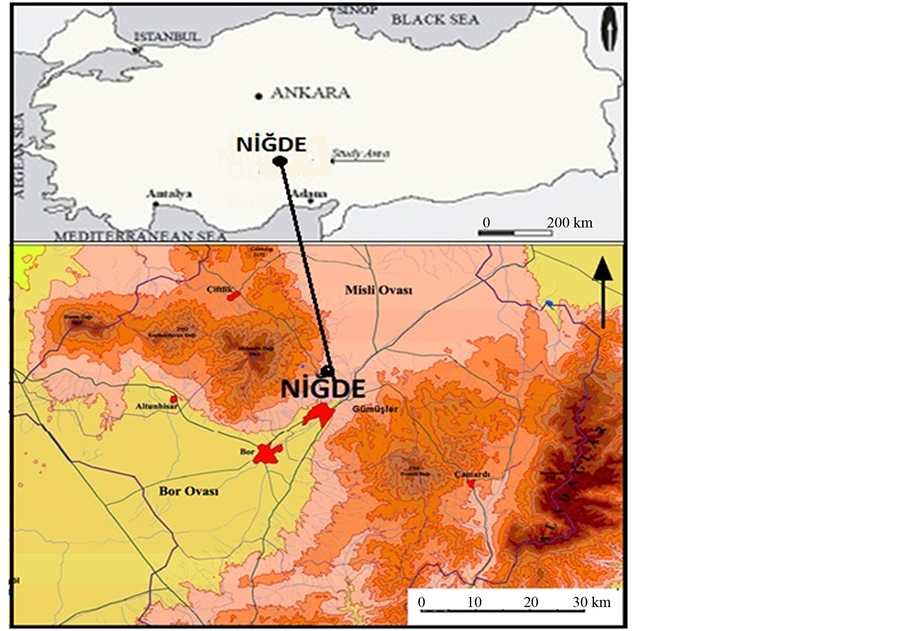
Figure 1. Location map of the city of Niğde.
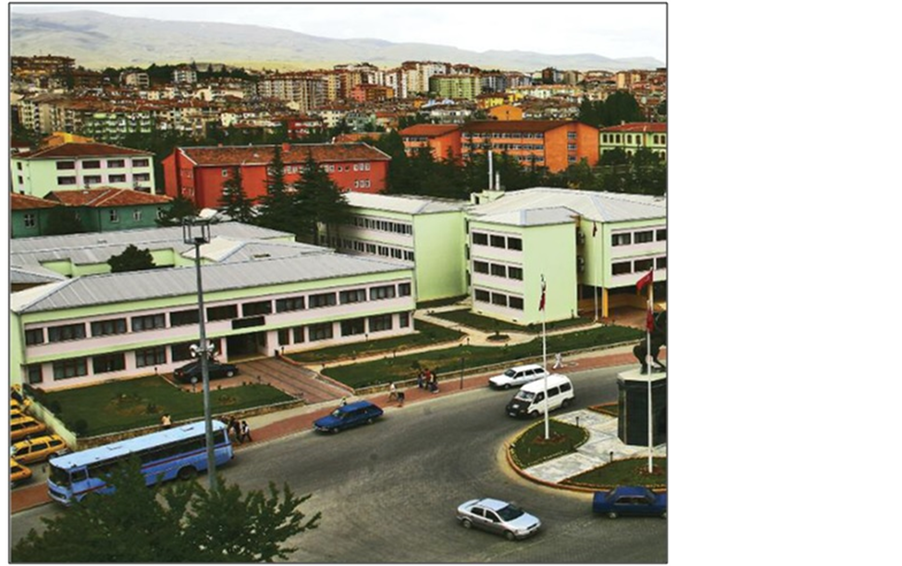
Photo 1. View of the city center of Niğde.
According to the city plan made in 2010 for Niğde, an area that is 41,241 hectare is in the city construction plan. The settling in this plan consists of 23 quarters and 109.724 people live in this settling according to the demographic data in 2010.
3. The Historical Process of Cultural and Historic Structure
There is a vast cultural and historic structure in Niğde and this dense structure dates back Neolithic and Khalcolithic periods (Yilmaz, 1999: 111-120). In this period, Hittites, Assyrians, Phrygians, Romans and Byzantines lived in Niğde and left many cultural and historic heritages behind them but the cultural and historic structure in city center of Niğde belongs to Seljukian, Principalities and Ottoman Empire. In the beginning, they formed the development of city around the hill called “Alaaddin Hill” and the other hills in that vicinity formed quarters with their own villages (Galanti, 1951: 7). Following it, in Hijri 434 (Miladi 1042) Niğde as a town fell under the domination of Turks of Seljukia, after the fall of Seljuks it fell under the domination of Karamanoğulları and lastly it fell under the domination of Ottoman Empire in the Period of Yıldırım Beyazıd (Hayri, 1994: 78). The cultural and historic structure creating the current city centre is comprised of the works of this period. There are several works which form historic structure such as Niğde Castle, Alaaddin Mosque, Rahmaniye Mosque, Sungur Mosque and its tomb, Sungur Bazaar and Covered Bazaar, The Tomb of Hüdavend Hatun, Akmedrese, Paşa Mosque and Bath, Dışarı Mosque, Kığılı Mosque, Saruhan and Clock Tower. The other historic works in Niğde also reflect the cultural and historic heritages of that period (Table 1) (Photo 2).
4. The Spatial Distribution of Cultural and Historic Structure
There are three centers which have dense cultural and historic structure in Niğde; The Castle on the Allaaddin Hill, The Alaaddin Quarters and Eskisaray Quarter (the vicinity of Akmedrese and Sungur Quarter with its current name), Tepeviran-Efendibey Vicinity (Yenice Quarter) in the northwest of castle, and the Up and Down Kayabaşı Quarter in the left side of castle. Niğde, which is a castle-center city, develops around the castle and maintains its feature of being a centre in which administrative structures, mosques and residences are located together. Today’s Niğde reflects especially the centralization of Ottoman Empire in 19th century. Niğde had a palace centered (Government Office) system in this period (Özel, 2005: 124) (Figure 2).
Table 1. Cultural, historical artifacts of Niğde.
Source: Valiliği, (2009), Belediyesi (2011).
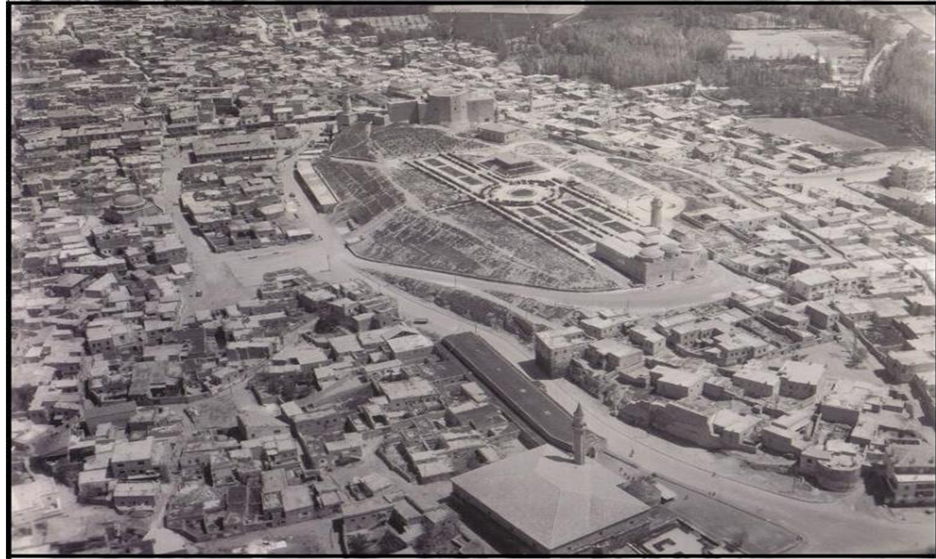
Photo 2. Niğde city’s 100-year previous view.
5. Protecting and Restoration of Cultural and Historic Heritage
Although the cultural and historic structure in Niğde has been protected until today, it has been destitute of the essential restorations and arrangements. Recently, there have been some projects with this aim but mostly they are not applied. “The Project of Restoration and Landscaping of Old Palace and Castles” which was conducted by Municipality of Niğde about 15 years ago is an example of this case. This project is a comprehensive work, which includes a major part of the cultural and historic structure in the city centre. It was planned to be finished in 2023 but it is not accomplished (Figure 3).
“The project of Renovation of Niğde Castle in 2006-2007”, “The Landscaping Project of Exposal and Regu
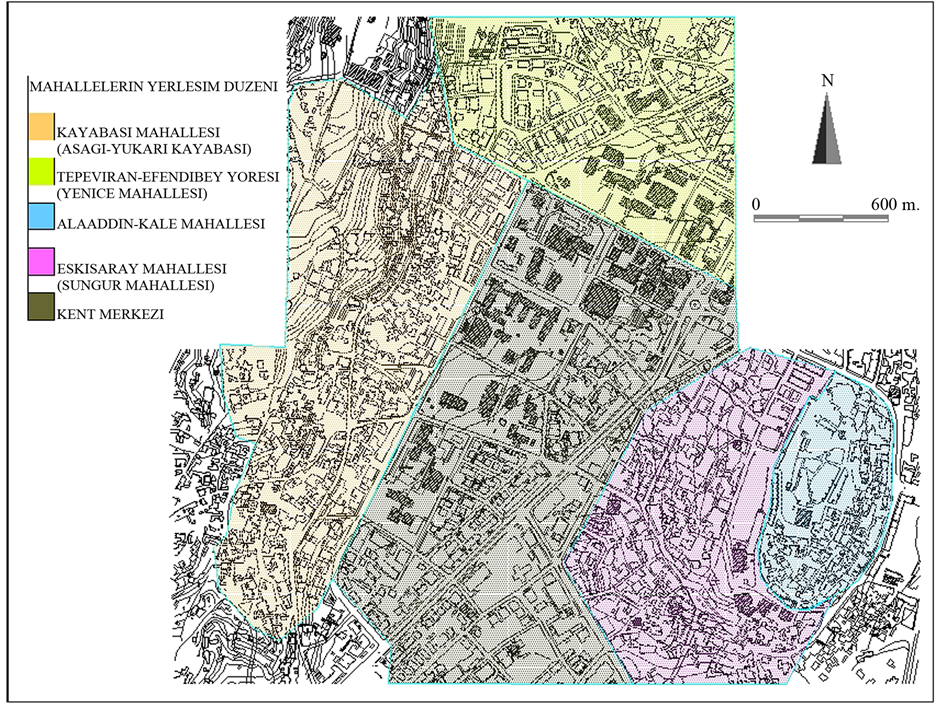
Figure 2. The settlement plan of Niğde and the quarters which have cultural history.
Source: Altuner, 1999, Niğde Evleri, Yayınlanmamıs Yuksek Lisans Tezi.
lation of Niğde Castle in 2006-2007” and “The Project of Exposal and Regulation of Niğde Castle in 2008-2009” are the completed projects by The Provincial Directorate of Kayseri Relieve Memorials and Museums. Niğde Castle was opened to the public as a result of the regulations of these projects.
“The Project of Hüdavent Hatun Park”, which was planned by the Municipality of Niğde 15 years ago, was started to be formed in 2010 and it was finished in May, 2010. This building contains Gündoğdu Tomb and both building were turned into parks after their landscapings were made with this project. Another completed project is “The Improvement of 29 Residence and Quarter in Cullaz Quarter” by The Provincial Directorate of Kayseri Relieve Memorials and Museums. It was started at the end of 2009 and it was completed in 2010. The exterior restorations of 29 residence were made.. Three of them were given to The Provincial Special Administration and their interior restoration was made by The Ministry of Culture and The Provincial Special Administration. Another residence located in Saruhan Quarter was restored by Niğde University and it was opened as “Art and Culture Centre of Niğde University” in 2010. The University uses it for cultural and social activities. The restaurant part of the centre is also accessible to the public (Photo 3).
6. Conclusion and Discussions
Niğde is a junction which enables the transition to the North and West Anatolia and it links Mediterranean Region and Central Anatolia as well as being on a crucial geography located on a historical trade road, so it has made many cultures alive, spread and survive until today. The cultural and historic structure of city center of Niğde is comprised of Seljukian, Provinces and Period of Ottoman Empire. The cultural and historic heritages of the traces belonging to these periods have survived until today. The cultural structures spread around the castle that is the core of ancient city center and they are surrounded by new buildings in the city center. It wears and

Figure 3. Niğde municipality restoration and landscaping project area for old palace and castle quarters.
Source: Belediyesi (2010) Eski Saray ve Kale Mahalleleri Çevre Düzenleme Projesi.
also damages the cultural and historic structure of the city. The misuse of these areas without knowing their exact value, lack of awareness of protection and lack of essential attention by government agency break the resistance of that wealth against time.
Recent years, the cultural and historic structures gain importance in Turkey as in the world.
Turkey has started to conduct studies to protect and transfer them into the next generations with the other countries in the world. And UNESCO continues to support protecting concrete cultural heritages with “The Contract of Protecting World Cultural and Natural Heritage” in the whole world. Therefore some responsibilities are given to the countries and some precautions are taken for the restoration of them.
Turkey has the conscious of the situation and it maintains the essential studies with collaboration of these institutions for the protection of whole historic structures which contains city center. Several studies for protecting the cultural and historic heritage are started in Niğde—one of these city centers. Although there is deficiency about the projects completed until today, they constitute a base for the future projects and this is a promising case. Although the restoration of the interior part of the castle was made among the arrangements about the Niğde Castle, there is still some deficiency in the environmental planning of Alaaddin Mosque. It is a need for the improvement of this area. Traditional handicraft masters should be gathered in this area with the restoration of the shopping centers under the castle, which reflect ancient historic structure. Historic bazaar place should be arranged in a way reflecting the traditional structure.




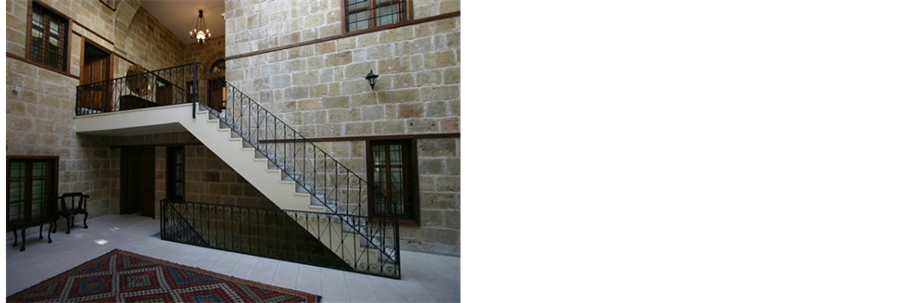

Photo 3. View of the restored areas of city.
The surrounding of building is opened with the Project of Hüdavent Hatun Park but it isn’t protected enough. The unconsciousness of the public about this issue, the increasing contact with the building and misuse of it form corrosive reasons.
The exterior restoration of ancient historic residences in Cullaz Quarter is extremely important for protecting historic structure. The residences and the streets in the centre of Niğde are also in need of this information. However, these studies should not be restricted to exterior sides of building, the interior sides should also be restored and opened to use. The problem of unjust treatment of the people living in this area should be solved.
The Art and Culture Center of Niğde University is a good example of reintroduction of a traditional building with restoration. However, a more impressive presentation should be prepared for the use of more extensive mass.
The cultural and historic structure of Niğde needs to be protected by the positive futures of these projects and new projects need to be conducted. So, governmental and private attempts should collaborate with universities and new projects should be created. Then, they should be activated. With these projects, the economical support of UNESCO should be taken and it should be placed to nomination of The Association of Historic Cities. With these improvements, cultural and historic structure of the city should be transformed into the city museum. The academic staff working in this field should arrange seminars in the area of city museum in order to raise awareness among the townspeople. In every degree of education, this issue should be focused to increase the awareness of people for the cultural and historic structure and it is needed for transferring these works into the next generations by ingratiating them to the people.
References
- Akpinar, E. (2007). Türkiye’nin Dünya Mirası Listesindeki Yeri ve Yeni Bir Aday Önerisi. Erzincan Eğitim Fakültesi Dergisi, 9-1, 81-96.
- Aliağoğlu, A. (2004). Sosyal-Kültürel Miras Turizm ve Türkiye’den Örnekler”. Ankara Üniversitesi Türkiye coğrafya Araştırmaları Merkezi, Coğrafya Bilimler Dergisi,Cilt:2, Sayı:2, Ankara: 55-70. http://dergiler.ankara.edu.tr/dergiler/33/825/10465pdf
- Altuner, A. (1999). Niğde Evleri. Ankara: Hacettepe Üniversitesi Sosyal Bilimler Enstitüsü (yayınlanmamış Yüksek Lisans Tezi).
- Belediyesi, N. (2010). Eski Saray ve Kale Mahalleleri Çevre Düzenleme Projesi.
- Belediyesi, N. (2011). Niğde Medeniyetlerin Yaşatıldığı Şehir. İzmir: Printer Ofset Matbaacılık.
- Çetin, T. (2010). Cumalikazık Küyü’nde Kültürel Miras ve Turizm Algısı. http://www.millifolklör.com
- Gülcan, B. (2010). Türkiye’de Kültür Turizminin Ürün Yapısı ve Somut Kültür Varlıklarına dayalı Ürün farklılaştırma İhtiyacı, İşletme Araştırma Dergisi. 2/1 Ankara. 99-120.
- Doğaner, S. (2001). Türkiye Turizm Coğrafyası. İstanbul: Çantay Kitapevi.
- Emekli, G. (2005). Avrupa Birliğinde Turizm Politikaları ve Türkiye’de Kültürel Turizm. Ege Coğrafya Dergisi, 14, 99-107.
- Emekli, G. (2006). Coğrafya Kültür ve Turizm: Kültürel Turizm. Ege Coğrafya Dergisi, 15, 51-59.
- Galanti, A. (1951). Niğde ve Bor Tarihi. İstanbul: Tan Matbaası.
- Hayri, M. (1922). Niğde Sancağı. (Çev. İlhan GEDİK). Niğde.
- Medan, U. S., & Baykan, E. (2007). Kültür Turizmi ve Turizmin Kültürel Varlıklar Üzerindeki Etkisi. Ticaret ve Turizm Eğitim Fakültesi Dergisi, 2, 30-49.
- Valiliği, N. (2009). Niğde Kültür Envanterleri. TC Niğde Valiliği İl Kültür Ve Turizm Müdürlüğü, Niğde: Tekten Basım yayın Ltd. Şti.
- Özel, M. (2005). Kentsel Gelişme ve Kentleşme Sürecinde Niğde. Selçuk Üniversitesi Karaman İktisadi ve İdari Bilimler Dergisi, 2, 120-144.
- Şahin, S. A., & Güner, S. (2011). Kültürel Mirasın Korunması ve Sivil Toplum Örgütleri Arasındaki İlişki. http://www.kumit.e.u/en/admin/userfiles/etkinlikler/Bil
- Tümertekin, E., & Özgüç, N. (1997). Beşeri Coğrafya İnsan, Kültür, Mekân. İstanbul: Çantay Kitapevi.
- Güvenç, B. (1994). İnsan ve Kültür. İstanbul: Remzi Kitapevi.
- UNESCO (1972). Dünya Kültürel ve Doğal Mirasın Korunması Sözleşmesi. 14.02.1983 Tarih ve 17959 Sayılı Resmi Gazete.
- UNESCO (2006). http://whc.unesco.org/en/list/
- UNESCO (2009). Türkiye’nin Dünya Miras Alanları Koruma ve Yönetiminde Genel Durum. Ankara: Birleşmiş Milletler Eğitim, Bilim ve Kültür Kurumu Türkiye Milli Komisyonu.
- Yilmaz, F. (1999). Dünden Bugüne Niğde Tarihi. Niğde: Kültür Kitapevi.
NOTES

*It was presented in “National Geography Congress” in September 2011/Istanbul.


